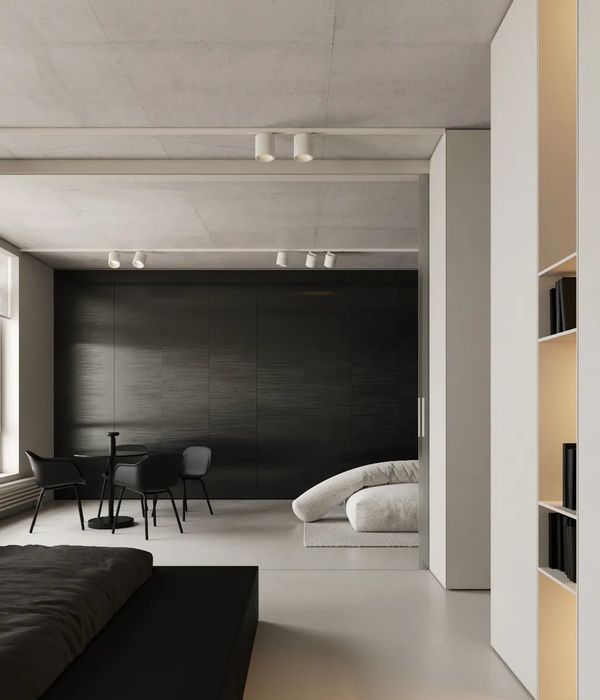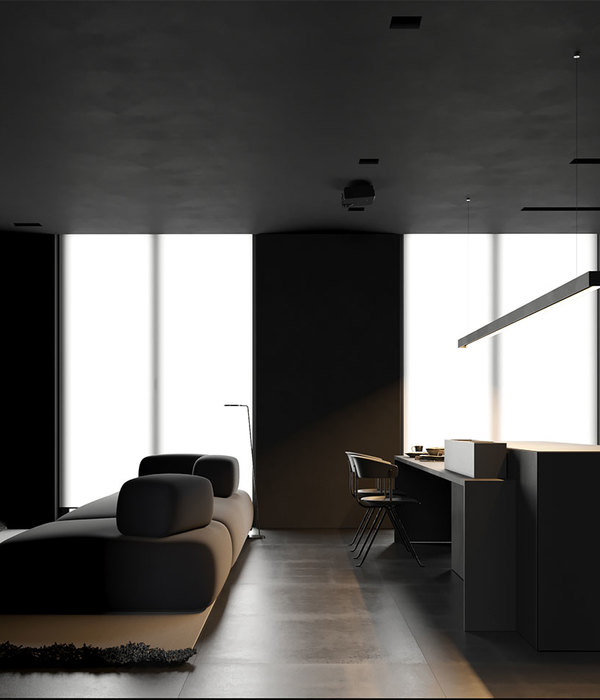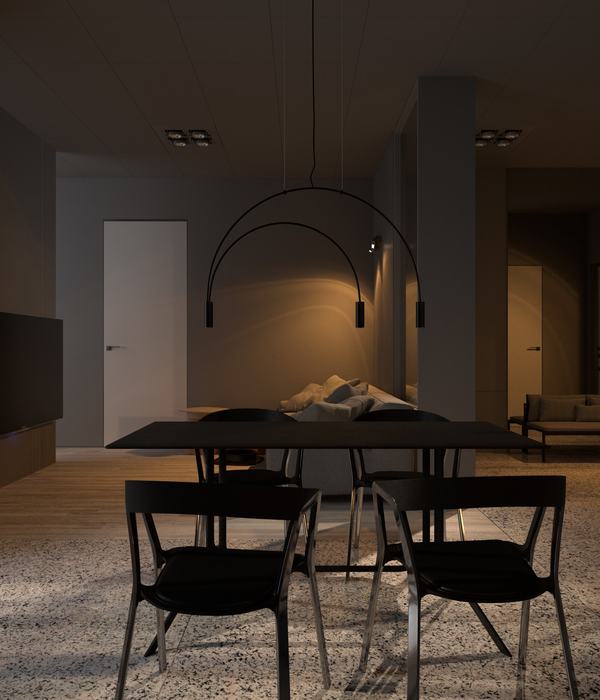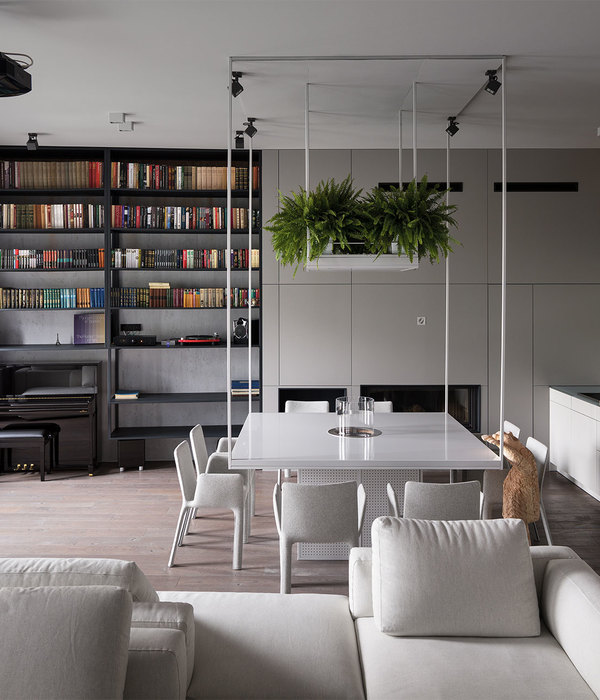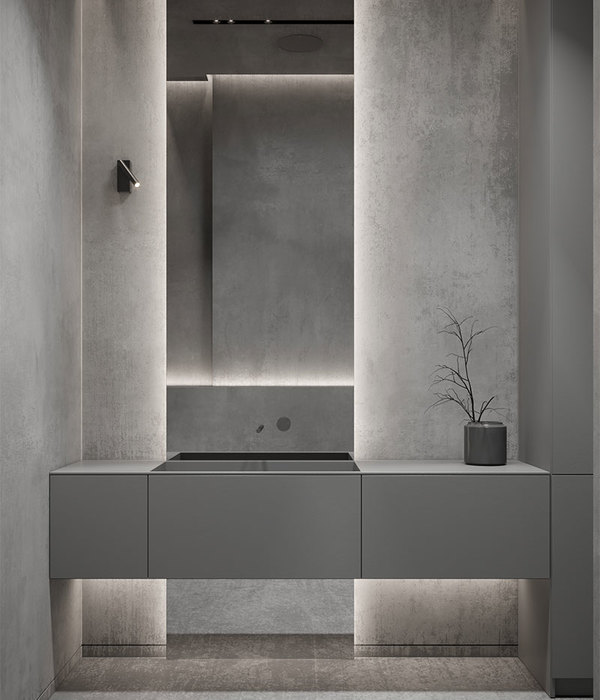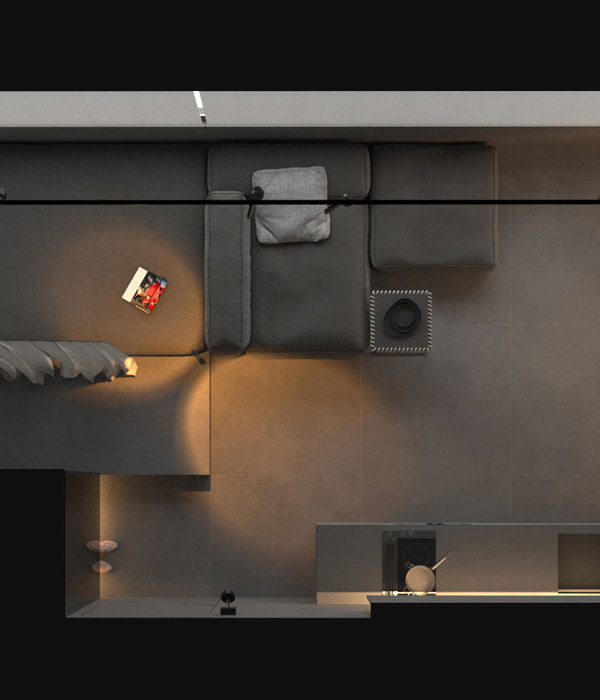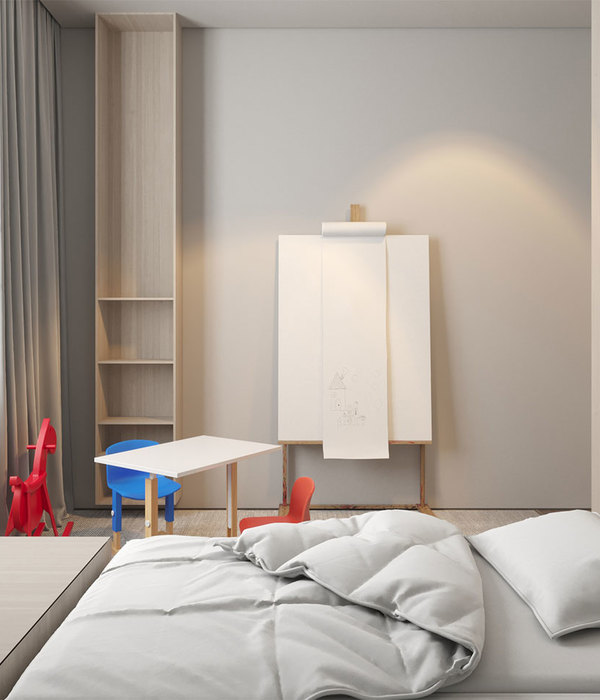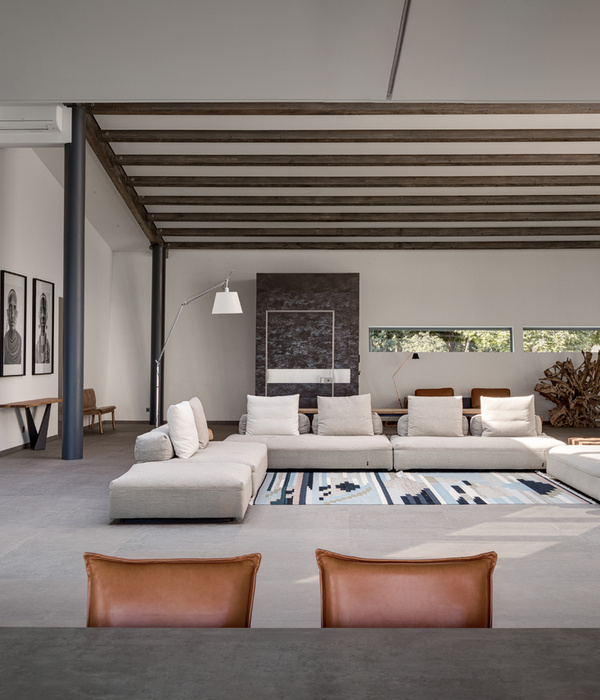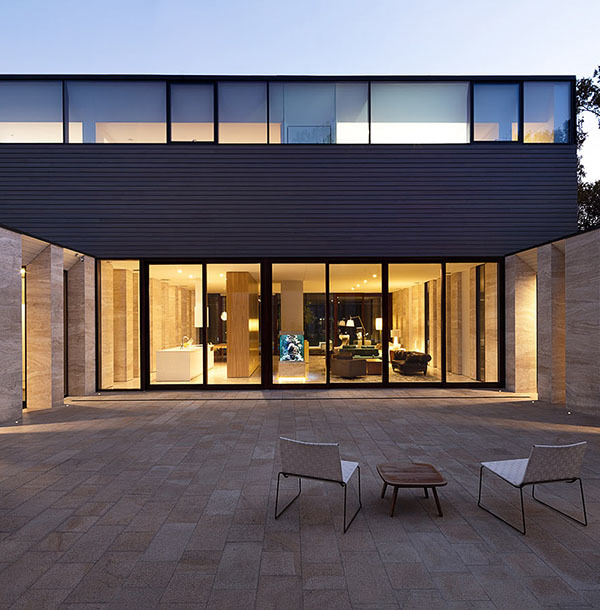At this site, the landscape transforms ranging from the contrast between the blue sky and the green vegetation and the grey days with cold, foggy weather, typical of one of the most rigorous winters in Brazil.
The monolithic piece is permeated by a garden that connects the building to its surrounding natural landscape. Through its courtyard scheme, the house gains an inner garden that frames the view of the neighboring preserved trees and, at the same time, provides privacy to the internal spaces.
The program follows the owners’ requirement for a single-storey urban house with a large garage to accommodate their simple antique car collection.
Resulting in a single-floor volume, the square floor plan is divided into three sectors. The two opposing sectors are equal in size and accommodate the garage on one side and the house on the other. These spaces are articulated by a service area and a barbecue space, connected to an external deck and to the garden.
From the outside, the house presents itself as a closed and austere block, whereas, from the inner courtyard, it transforms into transparent, revealing facades with wide windows that integrate house and garden. The internal patio becomes an introspective, contemplative space that acts as a connection between the different sectors of the program. The lineal opening of the garage facade provides a partial view of the parked cars, integrating them to the residential area.
The programmatic organization of the house pursues, at the same time, the fluidity of the domestic areas and the quality of the internal spaces, especially in terms of abundant natural light and visual connection to the exterior. Each space establishes a unique relationship with the other rooms as well as with the surrounding views. A series of sliding doors organizes and delimits the social and private areas, conforming a large intimate space for the couple’s daily life.
The restricted budget influenced the selection of materials and technologies employed in the construction. The focus was the viability of the project as well as a reduced maintenance cost. The design combines a concrete structure for the base [foundation, slabs and fixed furniture] and a metallic structure for the columns and beams. The exterior walls and the roof are cladded with the same metal roofing panels, which, along with the wooden cladding in the main facade, compose a monolithic volume.
The exterior and interior surfaces combine wood, glass and metal as a reflection of both industrial and artisanal aspects of the nature of the construction process.
The dark aesthetic of the exterior materials alludes to the local technique traditionally employed in the treatment of wooden houses, resulting in a simple architecture, fully capable of integrating itself to the surrounding landscape.
{{item.text_origin}}

